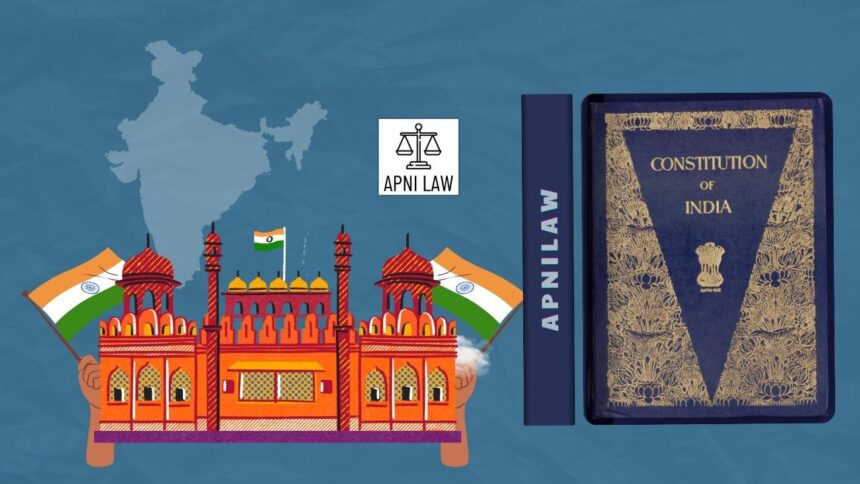The Indian Constitution balances federal and unitary elements, but it’s strong centralizing provisions give it a unique character. Unlike the United States, which follows a classic federal model, India has been described as a “quasi-federal state” or a federation with a unitary bias. These unitary features ensure that the Centre maintains authority over crucial matters. The framers of the Constitution believed that a strong Centre was essential for preserving unity in a country marked by diversity in language, religion, and culture.
What Makes the Centre Strong in India?
The Constitution of India vests greater powers in the Union Government. Legislative, financial, and administrative powers clearly lean towards the Centre. The Union List contains subjects of national importance, such as defense, foreign affairs, and communication. The residuary powers also rest with the Centre, unlike in the United States where such powers go to the states. In addition, the Centre can override the states on matters listed in the Concurrent List. Financial control lies heavily with the Union, as it collects and distributes most major taxes. During emergencies, the Centre assumes even more authority, leaving the states dependent on its decisions.
Why Does India Have a Single Constitution?
Another feature that highlights the unitary nature is the existence of a single Constitution for both the Centre and the states. In the United States, each state has its own constitution that operates alongside the federal constitution. India chose a different path to maintain uniformity in governance and law. The Indian Constitution applies equally to the Union and all states, ensuring consistency in the legal framework. This prevents fragmentation and strengthens national unity by providing a single set of rules applicable across the country.
How Does Single Citizenship Support Unity?
India follows the principle of single citizenship. Every person is recognized as a citizen of India only and not of any individual state. This prevents division of loyalty and creates a direct relationship between the citizen and the nation. Unlike in the United States, where one is both a citizen of the country and a state, Indians enjoy equal rights and obligations across the entire nation. This reinforces national integration and discourages regionalism.
What Role Does the Judiciary Play in a Unitary System?
The judiciary in India is integrated. At the top sits the Supreme Court, followed by High Courts and subordinate courts. The same system enforces both Union and state laws. This is unlike the United States, which has separate federal and state court systems. By creating one judicial structure, India ensures uniform interpretation of laws. The judiciary also serves as a guardian of the Constitution, maintaining balance between the Union and states while upholding central supremacy where necessary.
Why Are All India Services Important?
The presence of All India Services like the Indian Administrative Service (IAS), Indian Police Service (IPS), and Indian Forest Service (IFS) highlights the unitary design. These services are common to both the Union and the states. Officers are recruited centrally and then placed in states to implement Union policies. This system strengthens the role of the Centre by ensuring that its decisions are executed even at the state level. It also promotes administrative uniformity across the country.
How Does the Appointment of Governors Reflect Central Power?
The Constitution empowers the President of India to appoint state Governors. These Governors act as representatives of the Centre in the states. In practice, they often exercise discretion that can override the state government. This gives the Union an indirect influence over the functioning of states. The Governor’s role is one of the most debated unitary features because it provides the Centre with a tool to monitor and, if necessary, control state administrations.
Can Parliament Alter the Boundaries of States?
Parliament enjoys exclusive authority to alter the boundaries of states, create new states, change their names, or merge them with other states. The Constitution allows this process with only a simple majority in Parliament. The consent of the affected state is not mandatory. This power is unique because in most federations, states have significant control over their own existence. In India, the Centre alone can decide such matters, proving its dominant position in the constitutional structure.
What Happens During Emergencies?
Emergency provisions form one of the strongest unitary aspects of the Constitution. During a national emergency under Article 352, the Centre gains the power to legislate on any subject, including those in the State List. A state emergency under Article 356 allows the President to assume control over a state government if constitutional machinery fails. Financial emergencies under Article 360 allow the Centre to direct states on financial matters. In all these cases, the autonomy of states virtually disappears, and the Union assumes full control.
Why Is Representation in Rajya Sabha Unequal?
The federal system usually provides equal representation to states in the upper house of Parliament, but India follows a different approach. Representation in the Rajya Sabha is based on population. Larger states like Uttar Pradesh have more seats than smaller states like Sikkim. This system ensures that bigger states have a greater voice in national decisions. However, it reduces the equality of states, which is a fundamental principle of a true federation. Thus, unequal representation reinforces the unitary bias in India’s structure.
How Does a Single Election Machinery Function?
India has a single independent Election Commission that conducts elections for both the Union and state legislatures. In the United States and many other federations, states conduct their own elections independently. In India, one central authority manages the electoral process, ensuring uniform rules and practices. This reflects the strong role of the Centre in democratic governance and reduces the possibility of conflict between state and central election systems.
Why Are These Features Necessary?
The framers of the Constitution included these unitary provisions deliberately. India is a vast country with multiple languages, religions, and cultures. A purely federal system could have led to disintegration. Historical experiences, such as the partition of 1947, made leaders cautious about giving states too much autonomy. They believed that only a strong Centre could maintain unity and stability. The unitary features also enable quick decision-making in times of crisis, which is vital for a country of India’s scale.
How Do Unitary Features Impact Federalism?
These provisions, while essential for unity, also limit the autonomy of states. States often complain about excessive interference by the Centre. Issues like misuse of Article 356 and the role of Governors have raised concerns about federal balance. Yet, the Supreme Court has attempted to maintain equilibrium by restricting the arbitrary use of central powers. In practice, India operates as a federation with centralized control, striking a balance between diversity and national integrity.
For any specific query call at +91 – 8569843472
Conclusion
The unitary features of the Indian Constitution make it a unique political system. Provisions like a strong Centre, single Constitution, single citizenship, integrated judiciary, All India Services, central control over Governors, Parliament’s authority over state boundaries, emergency powers, unequal representation in the Rajya Sabha, and a single election machinery ensure national unity and stability. These features reflect the vision of the framers who feared disintegration in a diverse country. While India remains federal in form, it operates with a strong unitary spirit. This centralizing tendency has helped maintain cohesion, strengthen governance, and preserve the integrity of the nation.







